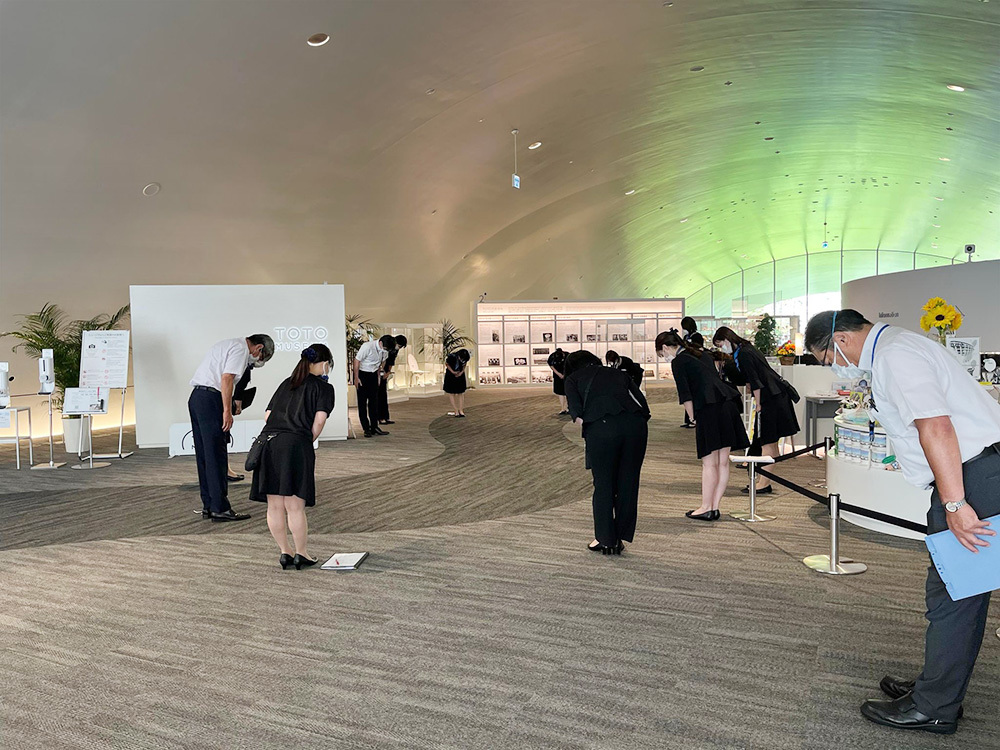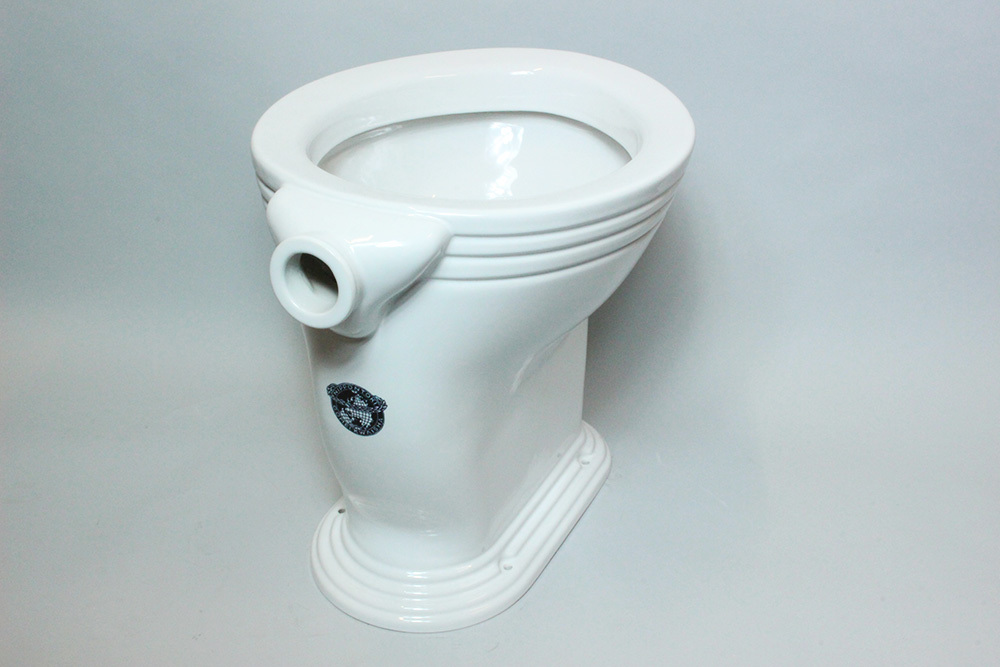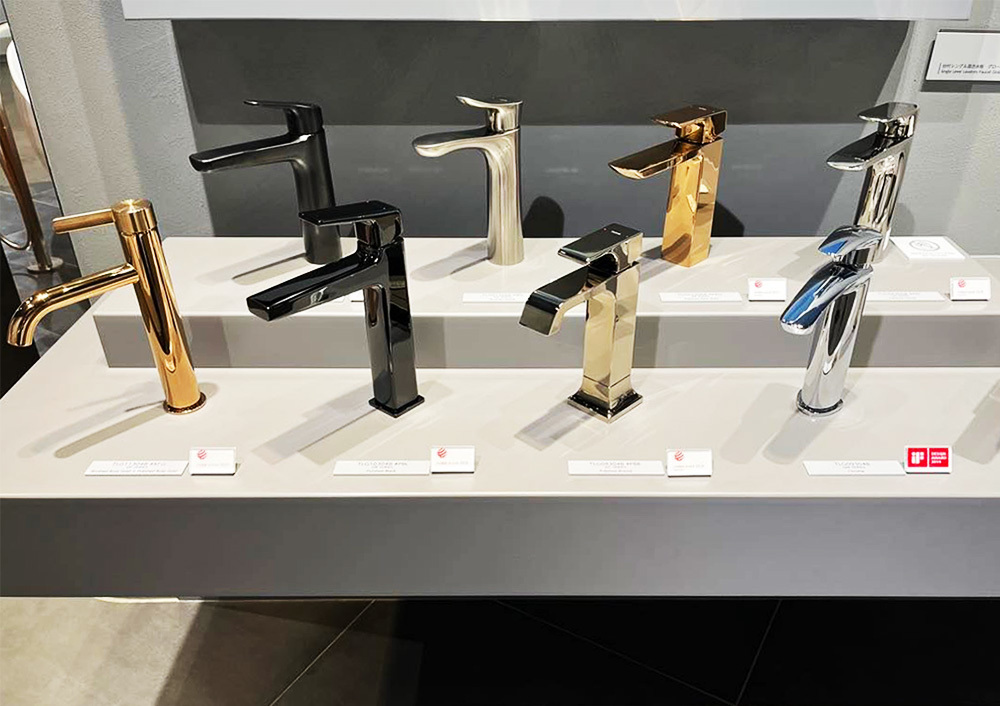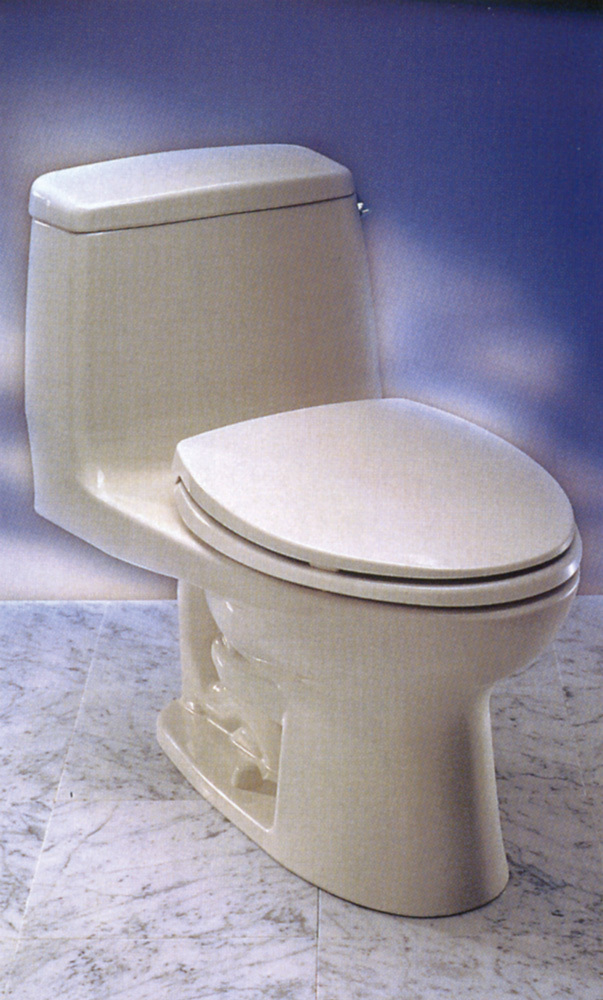Note: This website was automatically translated, so some terms or nuances may not be completely accurate.
"Kindness Comes First" – TOTO's Philosophy as Seen in Their Museum

Corporate museums occupy a buffer zone spanning both the academic realm of "museums" and the business realm of "corporations." They are organizations that collaborate diversely with corporate departments such as public relations, branding, advertising, and human resources. In this series, PR professionals will introduce various museums operated by corporations, exploring their roles, functions, and potential.
Corporate museums are the ultimate owned media. Nowhere is this more powerfully felt than at the TOTO Museum. The TOTO Museum overflows with brand stories across every space—real, virtual, and online. The founder's vision and the passion and struggles of the developers speak powerfully to us through the exhibits and the guides' explanations. By the end, visitors will find their hearts stirred and themselves transformed into fans of TOTO. This article explores how the TOTO Museum, as a landmark in its founding city of Kokura, communicates the TOTO brand to the world.
Reporting and Text: Kyoko Fujii (PR Consulting Dentsu Inc.)

The TOTO Museum is located within the grounds of TOTO's Kokura First Factory in Kitakyushu City, the company's founding location. It opened in August 2015 as part of the centennial commemorative projects. TOTO was founded in 1917 under the name "Toyo Toki Co., Ltd." The Kokura factory was also constructed at that time.
Water Nourishing the Earth
The museum consists of two white buildings designed to evoke "ceramics." The curved building on the left side of the front represents a "water droplet." TOTO, whose origins lie in developing the first Western-style flush toilet, has expanded its business around water-related products, hence the "water droplet" as a design motif.
The four-story building on the right represents "a lush green earth." Driven by the conviction that TOTO must continue considering the global environment, the "earth" was chosen as another design motif. Collectively, the design expresses "water nourishing the earth," conveying TOTO's message of contributing to a rich global environment through its water-related businesses.
Introducing "100 Environmental Items"
Indeed, this TOTO Museum incorporates environmentally conscious innovations. It features "Environmental Items 100" – 100 environmentally considerate elements utilizing the latest technology and wisdom across seven categories: water, heat, electricity, materials, greenery, durability, and air. The "Environmental Items 100," commemorating the 100th anniversary, embodies TOTO's environmental vision not just in words but throughout the entire building, encompassing toilets, lighting, walls, and plants. Incidentally, this building received the "BCS Award" in 2017, which honors outstanding domestic architecture.
Thoroughly Practiced Hospitality
The museum's first floor is a showroom, while the second floor houses the exhibition space. In the area just after exiting the escalator to the second floor, staff gather every morning one hour before opening for a morning meeting.
"Good morning at 15 degrees, one, two, three."
"30 degrees, thank you for your continued support, one, two, three, four"
"45 degrees, thank you very much, one, two, three, four, five."
During this morning meeting, all staff members, including guides who interact with visitors, physically practice bowing to confirm the angle and duration of each bow appropriate for different situations.

In Japan, bowing is a crucial form of nonverbal communication. At this museum, the day begins with ensuring this communication is executed properly. Before the 10 a.m. opening, staff also receive updates on the day's schedule and other important information to ensure visitors' tours proceed smoothly.
The TOTO Museum is a recommended tourist spot featured in guidebooks. On the online review site TripAdvisor, it consistently ranks among the top attractions in Kitakyushu. Beyond tourists, the museum accommodates diverse visitors and purposes: tours for business partners like contractors, training for domestic and international employees, and social studies education for local elementary students and school trip groups. Guide content is meticulously tailored to each.
Here, under the museum's hospitality philosophy of "creating and expanding TOTO fans worldwide with a spirit of hospitality," service improvements are constantly pursued, reflecting not only visitor feedback but also employee input. This thorough commitment to hospitality was recognized in 2020 with the acquisition of the "Traveler-Friendly Navy Certification" under the Ministry of Economy, Trade and Industry's "Hospitality Standard Certification 2020."

3D Virtual Museum Also Launched
The TOTO Museum welcomed approximately 65,000 visitors annually in 2019, before the COVID-19 pandemic, and surpassed a cumulative total of 400,000 visitors as of May 2022. In 2021, due to the pandemic, attendance dropped to 31,000. However, the museum launched "Online Tours" in May of that year. Furthermore, in June 2022, it opened its "Virtual Museum." The Virtual Museum uses 3D scans of the actual building interior, providing a more immersive experience. Navigation is simple, allowing visitors to explore stress-free from the comfort of their living room anytime.
Before the pandemic, many foreign visitors came. In April 2019, the museum launched an audio guide pen service for exhibition explanations in multiple languages. It supports four languages: Japanese, English, Chinese, and Korean, with an additional audio guide for children (Japanese only). By touching specific locations on the pamphlet with the pen, visitors can hear the audio guide.

TOTO's Roots
The TOTO Museum features three permanent exhibition halls. Hall 1 showcases TOTO's history and the tableware that supported the company for approximately 50 years from its founding. TOTO's roots lie in the trading company Morimura-gumi. Founder Kazuchika Okura joined Morimura-gumi after graduating university. At that time, his father, Magobe, who was involved in Morimura-gumi's management, aimed to domestically produce white hard porcelain. He traveled to Europe with Kazuchika. Kazuchika became convinced that "the era of sanitary ware (bathtubs, sinks, toilets, washbasins, etc.) would eventually come to Japan."
Though not an engineer, Kazuchika passionately pursued the domestic production of sanitary ware, which at the time relied entirely on imports. In 1912 (Meiji 45), he invested his personal fortune to establish a ceramics research institute within the Japan Ceramics Company (now Noritake Company Limited), an organization founded by Morimura Group in Nagoya. This was an era when even sewer systems were not yet fully developed, and domestically produced squat-style flush toilets did not exist in Japan. Although foreign-made sanitary ware had been imported since the early 1900s, it had not become widely available to the general public.

In 1914, he succeeded in developing Japan's first domestically produced squat-style flush toilet. In 1917, he founded "Toyo Ceramics Co., Ltd.," the predecessor of today's TOTO. At its founding, both production and sales faced challenges. With infrastructure like sewer systems largely absent, orders for sanitary ware were scarce. The company sustained itself through tableware manufacturing, a business cultivated by the former Japan Ceramics Company, while waiting for demand for sanitary ware to grow.
However, following the Great Kanto Earthquake and after World War II, reconstruction demand and rapid modernization drastically changed Japan's living environments, expanding demand for plumbing fixtures. Furthermore, the perspective shifted from viewing plumbing fixtures merely as equipment to considering them as integral parts of the space. Today, TOTO has leaped forward to become a top-tier domestic and globally trusted comprehensive manufacturer of residential equipment.
"TOTO's Aspirations"
The second exhibition room introduces the culture and history of Japanese plumbing, the vision of the pioneers who laid TOTO's foundation, and the evolution of the plumbing products TOTO has created over time. Representative sanitary ware and other items are displayed alongside television commercials aired during their respective eras, illustrating their evolution over time. In the "TOTO's Aspirations" section located immediately upon entering, a letter sent from the first president, Kazuchika Okura, to the second president is exhibited.

It expresses the belief that "Kindness must come first. Supplying quality products and satisfying customers are the tangible realities we must grasp. If we can grasp these realities, the shadow of reward will follow as a result." The phrase "must come first" conveys a particularly strong conviction. These words, resonating deeply, remain timeless even after a century. This founding president's statement forms the unshakable core of TOTO's management philosophy. Cherished by successive presidents, this principle is upheld throughout the entire company, including the museum.
Stories Told by the Exhibits
Further into the second exhibition room stands Japan's first unit bathroom (according to JIS standards), installed at Hotel New Otani in 1964.

Ahead of the 1964 Tokyo Olympics, hotels sprang up across Tokyo. The Hotel New Otani was also requested by the government to be built as accommodation for visiting foreigners. Taisei Corporation, the contractor, approached TOTO about developing the bathrooms around May 1963. The construction period was an unusually short one and a half years until the Olympics.
This 17-story hotel, with 1,058 guest rooms, was Japan's first super high-rise hotel. Yet, the construction period—which would normally take three years—was set at just 17 months, less than half the usual time. Compounding the challenge was a severe labor shortage due to the construction rush for the Olympics. Traditional bathroom construction methods simply wouldn't meet the deadline. To overcome this time constraint, the "unit bath" was born. By pre-assembling the lower frame (incorporating fixtures and plumbing) and upper wall frame in a factory, then hoisting them into place with cranes, construction time was drastically reduced.
Furthermore, fiber-reinforced plastic was used not only for the bathtub but also for the wash counter, making it lighter and easier to transport. Through various innovations and new technologies, Hotel New Otani was completed just before the Olympics. At first glance, it might seem like an ordinary exhibit, but this unit bath holds many stories. It speaks to the struggles and passionate dedication of the pioneers who, behind the national project of the Olympics, racked their brains to make the impossible possible and somehow meet expectations.
Becoming the TOTO of that country
The third exhibition room displays products TOTO sells worldwide, showing how they are adapted for different regions overseas.
 Faucets that have won awards like the "Red Dot Design Award" and "iF Design Award" are displayed (photo by author)
Faucets that have won awards like the "Red Dot Design Award" and "iF Design Award" are displayed (photo by author)TOTO's success overseas began with California's water shortage. The federal government enacted the Energy Policy Act in 1992. This mandated that toilets manufactured after 1994 limit flush water volume to 1.6 gallons (approx. 6 liters) per flush. TOTO had already been selling 6-liter toilets in the U.S. since 1988, ahead of the law. However, these were the type with the tank mounted on top of the bowl.
In the U.S. specifically, the "one-piece toilet," where the bowl and tank are integrated, was favored for its design and was popular. Other manufacturers began selling 6-liter one-piece toilets to comply with the law, but these were siphon-type toilets. With less water, the siphon effect became difficult to achieve, resulting in weaker flushing power to remove waste. Many failed to flush properly, leading to complaints that the 6-liter regulation was unrealistic. To address this, TOTO created countless prototypes and thoroughly researched the mechanism behind the siphon effect. They developed a clog-resistant one-piece toilet that could flush effectively with just 6 liters, launching it in the U.S. market in 1997.

Although compliant with the 6-liter regulation, numerous complaints arose in the U.S. that 6 liters "couldn't flush everything clean in one go" compared to toilets then sold there. Consequently, the National Association of Home Builders gathered toilets from various companies to investigate whether 6 liters could truly flush everything. The results showed TOTO products dominated the top three spots for best flushing performance. This test result was featured on news programs across the United States, making a significant impact on the American market. As demonstrated by this toilet development in the U.S., TOTO has consistently strived to develop the best products tailored to each country's needs, aiming to become "the TOTO of that country."
"Kindness Comes First"
Each product displayed at the TOTO Museum has its own story. Stories born to contribute to Japan's modernization, to improve society, and to meet the demands of each country. Through the guides' words, the struggles and aspirations of the pioneers behind each exhibit resonate with visitors. One can truly feel how each story connects back to the founding president's words: "Kindness must always come first." Visitors to this museum will be deeply moved each time they encounter the founder's vision and learn the stories behind the products in various parts of the museum.
The museum's hospitality philosophy—"To create and expand TOTO fans worldwide with a spirit of hospitality"—is undoubtedly being realized. If you ever visit Kokura, we strongly encourage you to visit in person and listen to the stories the products tell, accompanied by the guide's explanations.
[Editor's Note] (From the Web Dentsu Inc. Editorial Department)
Reading this feature reminded me that TOTO stands for Toyo Toki (Eastern Ceramics). I suspect few people today would recall that. For younger generations and international audiences, TOTO is simply TOTO – nothing else.
That, I believe, is what establishing a brand means. Even the term "sanitary ware" isn't widely understood by the general public. Isn't it all simply recognized as "TOTO-like"? Competitors gather around this "TOTO-like" standard, supporting and enhancing living environments not just in Japan, but globally—even, to put it grandly, "for humanity."
At its core lies the unwavering philosophy, consistent since its founding: "Kindness must come first." It's profound. Sanitary ware, supporting people's various needs in all aspects, is "absolutely essential" not just for daily life, but for life itself.
Was this article helpful?
Newsletter registration is here
We select and publish important news every day
For inquiries about this article
Back Numbers
Author

Kyoko Fujii
PR Consulting Dentsu Inc.
Executive Office, Public Relations Department / Visiting Associate Professor, Graduate School of International Liberal Arts
Supports public relations for domestic and international companies, governments, and municipalities. Currently serves as the company's public relations officer. Received the 2015 Golden World Award from the International Public Relations Association. Authored and edited works include: 'Municipal PR Strategy: Learning from 17 Success Stories' (Jiji Press), 'Communicating: A Guide to PR in Japan' (Wiley), and 'Welcome to the Corporate Museum: Volumes 1 & 2' (Jiji Press). Certified PR Planner by the Japan Public Relations Association. Visiting Associate Professor at the Graduate School of Global Communication and Language, Akita International University, starting in 2024.




